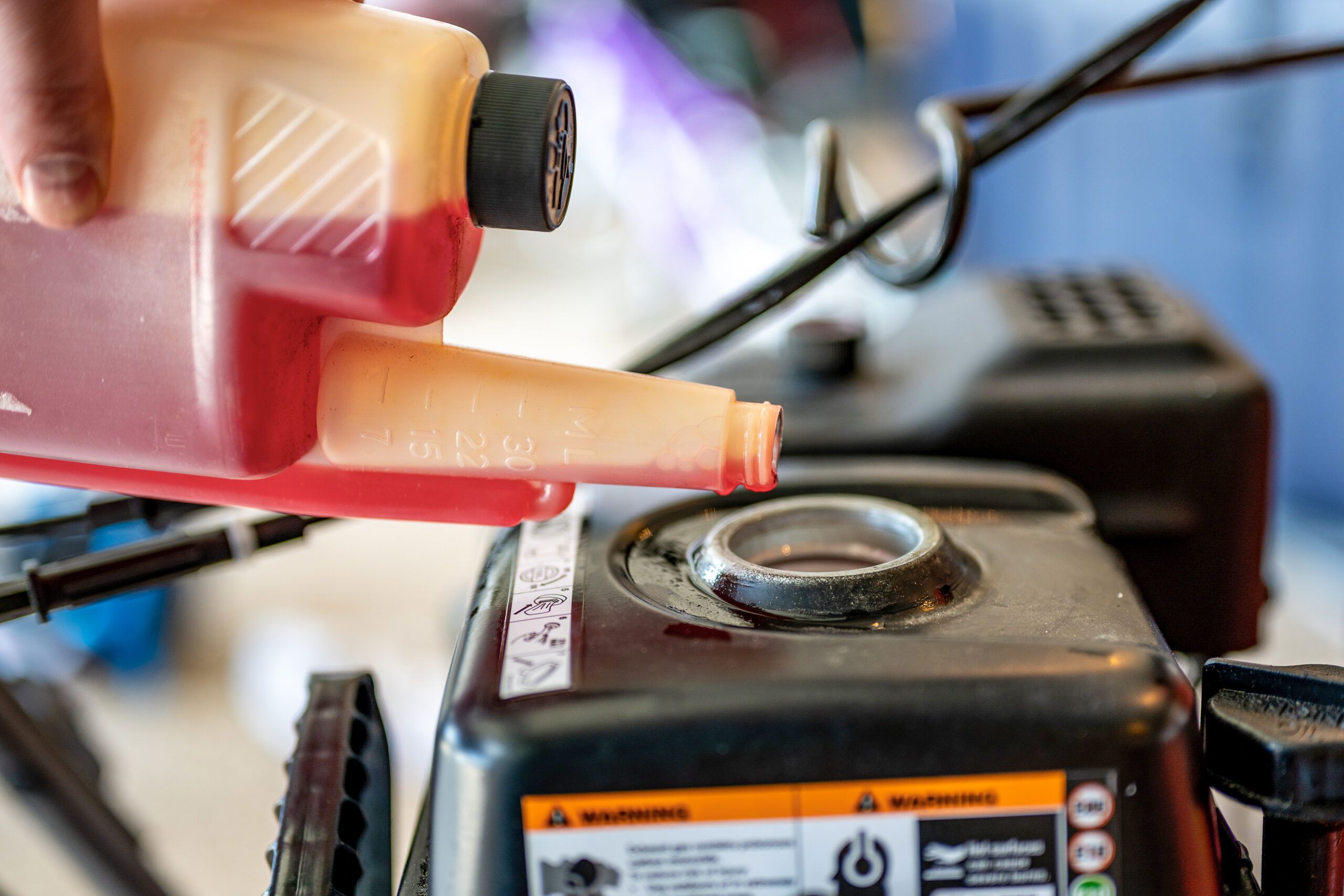As autumn gives way to the holiday season, yard work is usually the last thing on our minds. But trust us: Your lawn mower, string trimmer, and other lawn power tools will benefit from some upkeep before they hibernate for the long winter ahead. Take a little time to clean and prep them, then remember to thank us next spring, when your gear comes roaring back to life without a hitch.
Tips for Storing Yard Tools in the Winter
Don’t let oil sit over the winter
When a tool sits around unused, the oil inside gets sludgy, making the engine less efficient. Drain oil from a push mower by unscrewing the plug beneath the motor and catching the liquid in a pan. Other lawn power tools can be drained in a similar manner. Drop off the dregs at your town’s haz-waste facility, or visit Earth 911 for a list of recycling centers.
Check for worn or missing parts
Inspect equipment for missing screws and nuts, replacing as needed. Make sure gas caps have intact O-rings, which seal off the tank to keep fuel from absorbing dust or moisture. If yours are cracked or brittle, contact the tool’s manufacturer for replacements.
How to change the fuel filter
Dirty fuel filters make a tool’s engine work harder to draw gas. Replace yours by curving a 6-inch length of a metal coat hanger into a hook and reaching into the gas tank to fish out the fuel line. The filter dangles from the end—pull it off and install a new one.
Spark plug maintenance
Spark plugs, found in gas-powered tools, ignite the air-fuel mixture that gets the engine going. They get dirty with repeated use, so remove them with a socket wrench, spray the large ends with brake spray cleaner (available at automotive shops), and scrape off the carbonized black bits with a stiff wire brush. If the plugs are too dirty to clean, simply replace them.
Prevent fuel from degrading in the tank
Fuel degrades as it sits in the tank, so pour in some fuel stabilizer (available at home stores), following the dosage directions on the bottle; it will keep gas fresh for about six months. For lighter tools, such as trimmers, it’s better to drain the gas entirely. Pour the excess into a clean pan, then run the engine with the choke on, pressing the primer button until it quits.
Pro Advice: “Don’t leave cans of gasoline sitting around, because the fuel will absorb water, which makes motors run rough. Funnel whatever’s left into your car’s tank, then buy fresh gas come springtime.”
—Craig Murray, owner, LIFFCO Power Equipment, Mineola, New York
Clear away dirt and rust
This lawn power tool care tip is very important for mowers, where stuck-on soil traps moisture next to the metal, leading to rust. For safety’s sake, disconnect the spark plug and remove the blade, then use a brush and a putty knife to clean off dirt and clippings, rinsing with water, if needed. (Make sure the carburetor and air filter are above the motor when you do this so that oil doesn’t drain into them.) If you see rust, scrape off as much as you can with a wire brush, then spray the area with a rust-inhibiting enamel.
Changing the filter
Dirty air filters clog motors, causing them to run harder and hotter than normal. Torn filters should be replaced. Extend the life of an air filter by removing the trapped debris regularly. Tap it firmly against the inside of a trash can or spray it with compressed air (use a dust mask if you do this).
Don’t let hinges and moving parts dry out
Spray hinges and moving parts with lubricant before storing equipment to prevent them from rusting into place. Finally, wipe tung oil along wooden handles so that they don’t dry out and crack. And enjoy a few months off from mowing!

